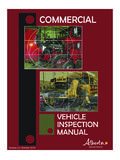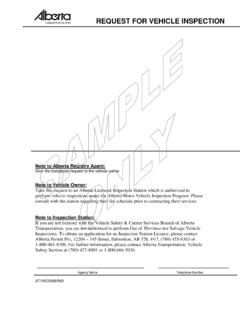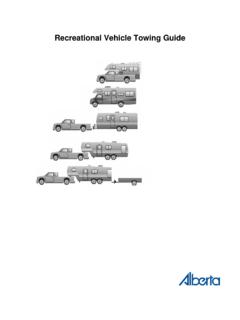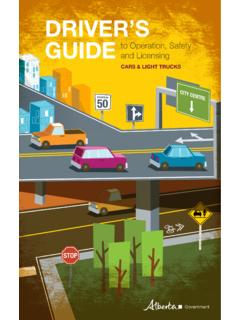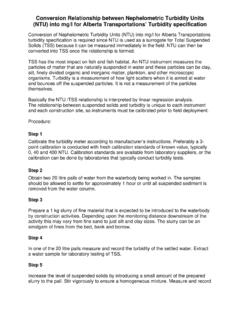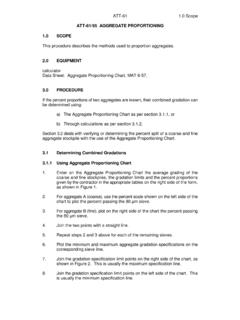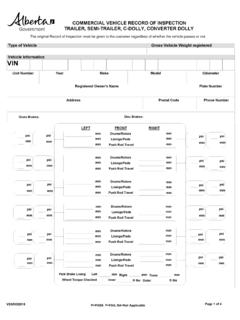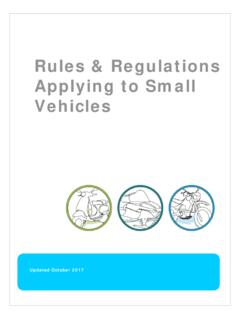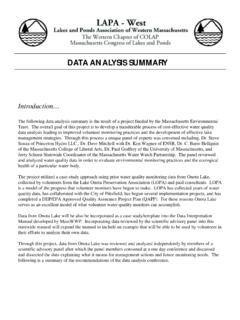Transcription of 7.0 EROSION AND SEDIMENT CONTROL METHODS 7.1 …
1 SECTION 7 - EROSION AND SEDIMENT CONTROL METHODSJune AND SEDIMENT CONTROL is important to recognize the difference between EROSION CONTROL measures andsediment CONTROL measures when preparing an effective EROSION and SEDIMENT controlplan. The difference between EROSION and SEDIMENT CONTROL METHODS is defined andsummarized for the purposes of this document and all related activities on constructionsites as follows: EROSION CONTROL is the process whereby the potential for EROSION is minimized.
2 And SEDIMENT CONTROL is the process whereby the potential for eroded soil beingtransported and/or deposited beyond the limits of the construction site is this document, the term " SEDIMENT CONTROL " is synonymous to CONTROL should be viewed as the primary means in preventing the degradation ofdownstream aquatic resources whereas SEDIMENT CONTROL should be viewed as acontingency plan . Most EROSION CONTROL measures are initiated to facilitate the earliestshift to vegetation as the EROSION CONTROL medium.
3 A greater emphasis must be placedon EROSION CONTROL , particularly in areas of elevated EROSION potential where fine particlesthat will not readily settle out in a practical time frame are exposed during , measures to address both EROSION CONTROL and SEDIMENT CONTROL are requiredfor most design of EROSION and SEDIMENT CONTROL measures should be viewed as a flexibleprocess that responds to new information that is obtained throughout the constructionphase. As such, the design of temporary and permanent EROSION and SEDIMENT controlmeasures should be expected to evolve throughout construction to varying degreesbased on site conditions and field performance of implemented and SEDIMENT CONTROL measures are classified into the following categories: Temporary measures; Permanent measures; Minimum requirements (Planning Strategy); and Best management practices (BMP).
4 Each of these categories and BMPs are described in the following and Permanent CONTROL MeasuresErosion and SEDIMENT CONTROL measures can be classified into two broad categories: Temporary Measures: Those measures during the construction phase that will becompletely removed once permanent measures are installed and/or vegetativecover is established; and Permanent Measures: Measures incorporated into the overall design to addresslong-term, post construction EROSION and SEDIMENT 7 - EROSION AND SEDIMENT CONTROL METHODSJune 20117-2 Temporary EROSION and SEDIMENT CONTROL measures should be installed at the start of theconstruction phase.
5 Additional measures will likely need to be installed throughout theconstruction EROSION and SEDIMENT CONTROL measures can beinstalled during or at the end of the construction listing of EROSION and SEDIMENT CONTROL BMPs are presented in Tables C-1, C-2 andC-3 in Appendix C. Examples of temporary measures include topsoiling, seeding, slopetexturing, synthetic permeable barrier, mulching, RECP coverings, silt fence, rolls,wattles, straw bale barriers, etc. Examples of permanent measures include offtakeditch, energy dissipator, berm interceptor, gabion, rock check, SEDIMENT pond/basin, on site conditions, some temporary measures will be retained for a longerduration to render its life span more permanent.
6 Streambank application BMPs areadded (Table C-4) in Appendix BMPs and Planning StrategyProcedural BMPs (Table C-5) in Appendix C are often called minimum requirementswhich are non-structural METHODS or procedures that can reduce EROSION and sedimenttransport. Proper planning generally constitutes the minimum requirement for preparingan EROSION and SEDIMENT CONTROL construction planning includesimplementing EROSION or sedimentation CONTROL BMPs early in construction andrecognize the impact of different seasons on highway construction sites ( , rainfall,snow melt).
7 Various METHODS of scheduling construction activities can provide the first,best opportunities to help minimize the potential for EROSION and , the minimum requirements are generally not sufficient on their own. As such,many construction projects will require site specific EROSION and SEDIMENT controlmeasures to be implemented as site conditions effectiveness of theerosion and SEDIMENT CONTROL measures on a site is highly dependent on properimplementation of a well prepared EROSION and SEDIMENT CONTROL minimum requirements for planning strategies and procedural BMPs for an erosionand SEDIMENT CONTROL strategy are presented in Table the Practice of EROSION and SEDIMENT CONTROL (ESC)
8 As a WholeSystemIt is important that the designer and contractor recognize that successfully implementingESC measures requires a good understanding of the principles of the ESC process byboth design and field staff. Installing BMPs correctly to specific site conditions andongoing timely upgrading and maintenance are essential for a successful outcome. Theplanning strategies and BMPs presented in this document are as equally important asthe understanding of the principles of their implementation to achieve good constructionperformance and protection of the is essential to understand that the objectives of the ESC measures begin witheducation and interaction throughout the planning, design, construction and postconstruction 7 - EROSION AND SEDIMENT CONTROL METHODSJune 20117-3 Table.
9 Planning Strategies and Procedural BMPs for ESC PlansBMPA pplicationsCommentsSlopesDitchesandChann elsLargeFlatSurfaceAreasBorrowandStockpi leAreaAdvantagesLimitationsMinimize ExposedSoils Decreases EROSION potential and decreasesquantity of EROSION and SEDIMENT controlmeasures required thus decreasing costsMay require topsoiling/seeding becompleted on areas before stripping ofnew areasObserveEnvironmentalTiming Restrictions Minimizes possible negative impacts onfish and wildlifeMay affect project scheduleMaximize WorkDuring FavourableWeather Minimizes volume of work required in lessdesirable (wet)
10 Conditions, thus decreasingpotential for EROSION and SEDIMENT transportMay require additional resources toincrease scale of production/constructionInstall BMPs Early Minimizes SEDIMENT losses duringconstructionMay cause difficulties with site access ortrafficAvoid Wet WeatherPeriods Minimizes EROSION potentialShutdowns may prolong/delayconstruction activitiesTopsoil and SeedEarly Covers exposed soil and reduces erosionpotentialSurface Roughening(Slope Texturing) Reduces EROSION : estimated 12% for adozer ripping on the contour, 52% for trackwalking up and down the slope, 54% forsheep s foot rolling, and 76% for imprinting(Mike Harding, 2010)
